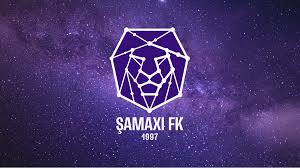The Laver Cup is more than just a tennis tournament; it’s a celebration of the sport, a showcase of talent, and a riveting competition that brings together some of the best players from across the globe. Named after Australian tennis legend Rod Laver, the event features a unique format that pits Europe against the rest of the world in a thrilling team-based contest. Launched in 2017, the event has quickly become a fan favorite, capturing the hearts of tennis enthusiasts worldwide.
The Birth of the Laver Cup
The inception of the Laver Cup can be traced back to a conversation between Roger Federer and his management team, who sought to create an event that would pay homage to one of the game’s greats, Rod Laver. The goal was not merely to add another tournament to the crowded tennis calendar but to establish a unique team competition that would foster camaraderie among players while delivering high-stakes, competitive tennis.
The idea materialized into a tournament that features two teams: Team Europe and Team World. The structure allows for both singles and doubles matches, with players earning points towards their teams’ totals. This innovative setup creates an electric atmosphere, reminiscent of other team sports formats like the Ryder Cup in golf or the Davis Cup in tennis itself.
Concept and Format
At its core, the Laver Cup emphasizes teamwork and national pride. Unlike traditional tournaments where individual performance reigns supreme, the Laver Cup celebrates collective effort and strategy. Each team consists of six players selected based on their rankings at the time of the event.
The competition unfolds over three days, with various match formats being employed:
- Singles matches: Each day features a series of singles matches, where players compete head-to-head.
- Doubles matches: These matches add an exciting twist, forcing players to work in tandem, showcasing their chemistry and coordination.
- Scoring System: Points are awarded differently throughout the event. On Friday, each match win counts for one point, Saturday matches are worth two points, and Sunday matches are worth three points. This scoring system adds an extra layer of excitement, especially as the stakes rise on the final day.
This vibrant mixture of formats makes the Laver Cup not only a test of skill but also a strategic battle where players must adapt to different styles and partner dynamics.
Historical Context and Significance
The Laver Cup holds a significant place in the history of tennis. While many tournaments have long established traditions, the Laver Cup represents a fresh approach, breathing new life into the sport. Its creation came during a period when global interest in tennis was growing, largely due to the legacies of stars like Federer, Nadal, and Djokovic.
By honoring Rod Laver, the event connects current players to the rich tapestry of tennis history—serving as a reminder of the legends who paved the way for future generations. Moreover, it reflects the evolution of tennis, particularly in how players engage with audiences through social media and global tours, making the sport more accessible and relatable to fans.
Impact on Players and Fans
The Laver Cup has profoundly impacted both players and fans alike. For players, it serves as an opportunity to forge bonds, build friendships, and collaborate with rivals in a way that’s seldom seen in standard tournaments.
For fans, it amplifies their experience by offering a festival-like atmosphere infused with electrifying energy, cheering crowds, and a shared passion for the sport. The tournament encourages cross-generational attendance, allowing families to indulge in a weekend filled with world-class tennis while cherishing a sense of community.
Moreover, the support for charitable endeavors during the event highlights the good that comes from this competitive spirit. Both teams often engage in philanthropy, reinforcing the notion that even amidst fierce competition, there exists a commitment to positive change.




